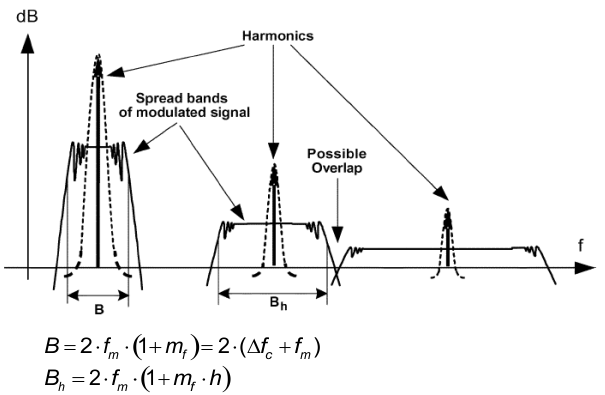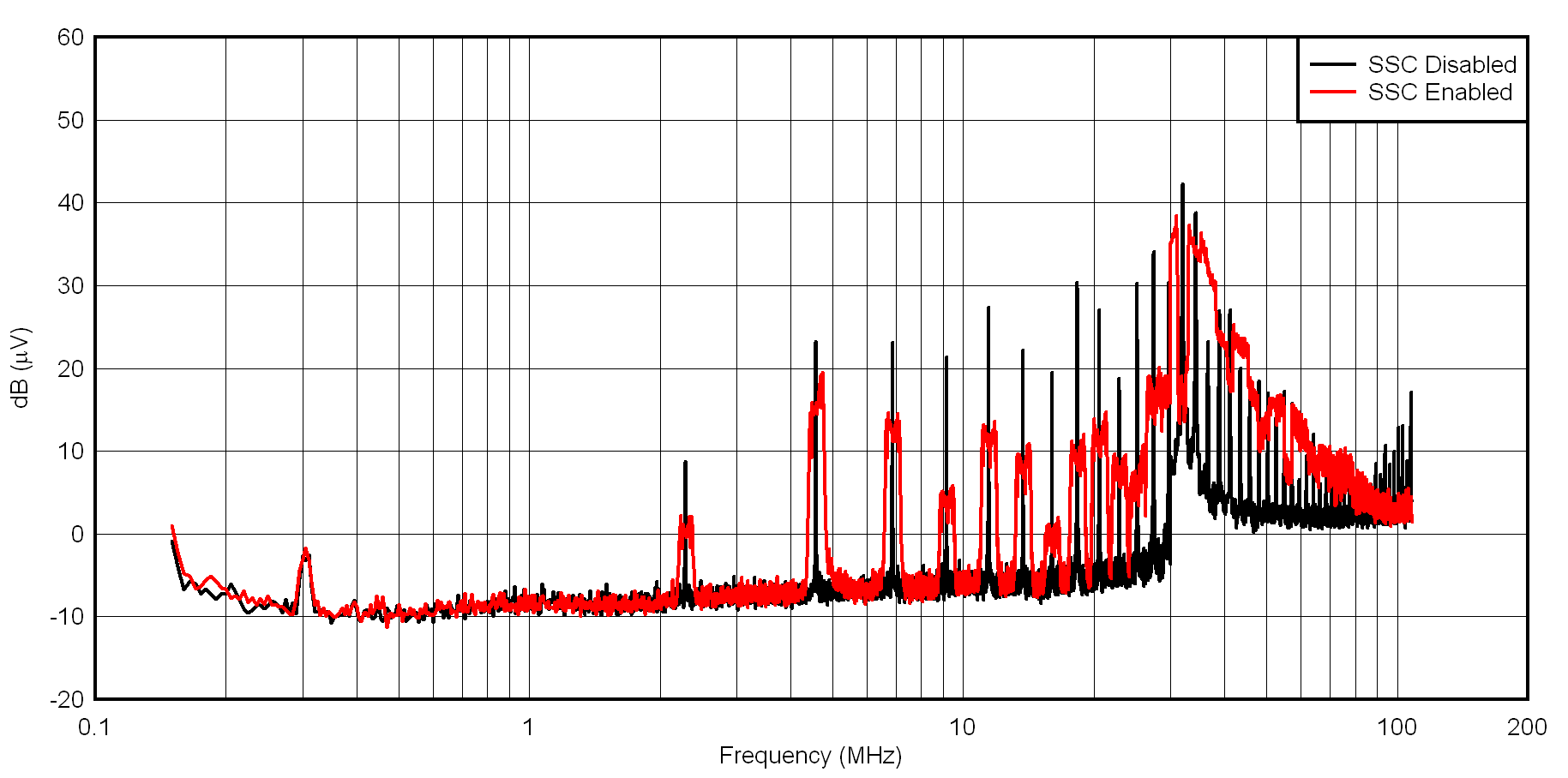SLVAFJ0 april 2023 TPS650350-Q1 , TPS650352-Q1
2 Spread Spectrum
The TPS650350-Q1, TPS650351-Q1, TPS650352-Q1, and TPS650353-Q1 are a family of PMICs for camera applications. Each device includes three step-down (buck) converters and one low dropout (LDO) regulator. The three buck converters are capable of spread spectrum clocking (SSC), a feature that modulates the switching frequency of each converter to spread the power that can cause EMI. This internal modulation spreads the operating frequency from 2.0 MHz to 2.5 MHz with a center frequency of 2.25 MHz and can be enabled or disabled with a single register write through I2C communication.
The goal of spread spectrum architecture is to spread out emitted RF energy over a larger frequency range. Spreading the operating frequency of the buck converters results in a more continuous power spectra that is lower in peak amplitude, as shown in Figure 2-1. This peak reduction is possible because the time integral of the curve (the EMI energy emitted by the circuit) remains constant whether spread spectrum is enabled or disabled.
 Figure 2-1 Spread Bands of Harmonics in Modulated Square
Signals
Figure 2-1 Spread Bands of Harmonics in Modulated Square
SignalsFigure 2-2 compares the conducted emission performance with SSC enabled and disabled using the TPS650350-Q1 and the example layout discussed in this application report.
 Figure 2-2 TPS650350-Q1 SSC Conducted Emission Comparison
Figure 2-2 TPS650350-Q1 SSC Conducted Emission Comparison